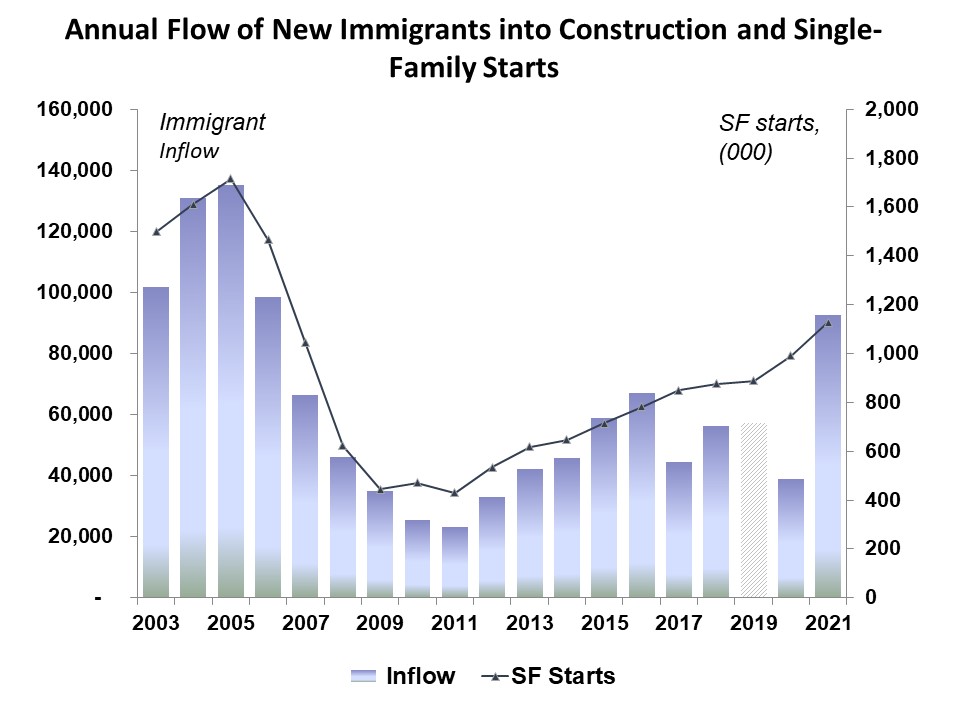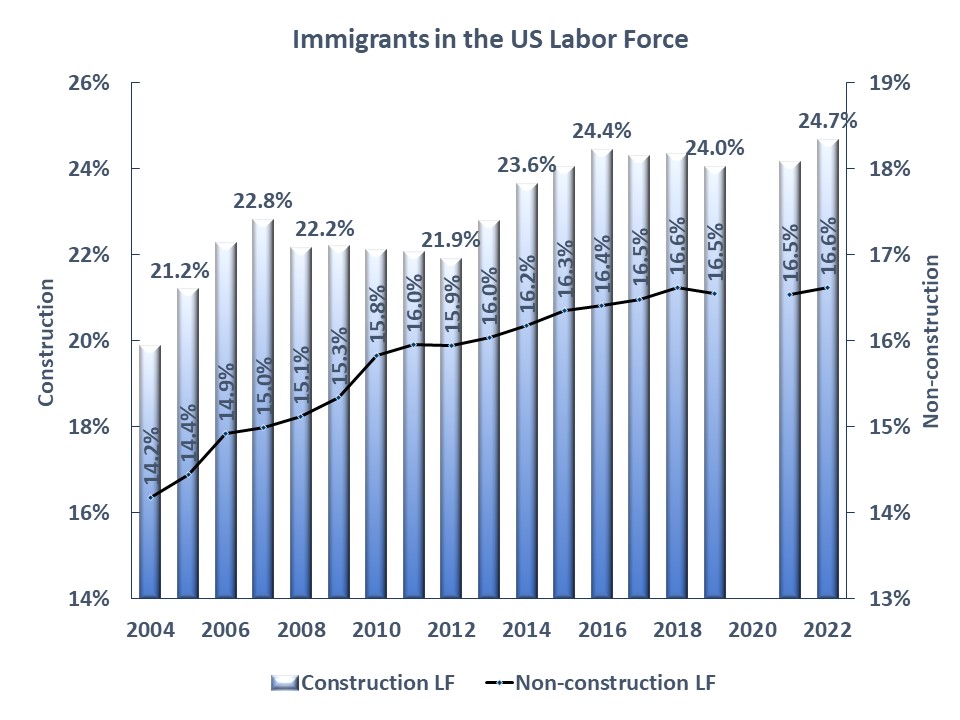Native-born US workers remain reluctant and continue joining the industry at a slower rate, with their total count remaining over half a million below the record levels of the housing boom of the mid-2000s.
After years of being unable to ratchet up the number of new workers coming from outside the U.S. to help with persistent labor shortages, the construction industry reversed this trend and managed to attract over 90,000 new immigrant workers, levels unseen since the housing boom of 2005-2006. Native-born workers remain reluctant and continue joining the industry at a slower rate, with their total count remaining over half a million below the record levels of the housing boom of the mid-2000s. As a result, the share of immigrants in construction reached a new historic high of 24.7%, according to the most recent 2022 American Community Survey (ACS). In construction trades, the share of immigrants is even higher, exceeding 31%, according to analysis from the National Association of Home Builders.
The latest ACS data show that 11.8 million workers, including self-employed and temporarily unemployed, comprised the construction workforce in 2022. Out of these, 8.9 million were native-born, and 2.9 million were foreign-born, the highest number of immigrant workers in construction ever recorded by the ACS.
The construction labor force, including both native- and foreign-born workers, now exceeds the pre-pandemic levels but remains smaller than during the housing boom of the mid-2000s. As the chart above illustrates, it is the native-born workers that remain missing. Compared to the peak employment levels of 2006, construction is short 525,000 native-born workers and new immigrants only partially close the gap. Due to the data collection issues during the early pandemic lockdown stages, we do not have reliable estimates for 2020 and omit these in the charts.
Typically, the annual flow of new immigrant workers into construction is highly responsive to the changing labor demand. The number of newly arrived immigrants in construction rises rapidly when housing starts are rising and declines precipitously when the housing industry is contracting. The response of immigration is normally quite rapid, occurring in the same year as a change in the single-family construction activity. Statistically, the link is captured by high correlation between the annual flow of new immigrants into construction and measures of new home construction, especially new single-family starts.

This connection broke in 2017 when NAHB’s estimates showed a surprising drop in the number of new immigrants in construction despite steady gains in housing starts. This link was severed further by pandemic-triggered lockdowns and restrictions on travel and border crossings, drastically interrupting the flow of new immigrant workers. The most recent data show that 2021 marked a new milestone with the flow of immigrants into construction returning to typical levels driven by home building activity.
The overall rising trend as well as the noticeable uptick in the share of immigrants since 2021, are consistent with but slightly greater in construction compared to the changes observed in the rest of the US economy. Excluding construction, where the reliance on foreign-born workers is greater, the share of immigrants in the US labor force increased from just over 14% in 2004 to 16.6% in 2018, the highest level recorded by the ACS. The share of immigrants stabilized at these record high levels with no further increases in the post-pandemic market, returning to 16.6% in 2022.
This hardhatNEWS article was first published on LBM Journal
You can now follow our WhatsAPP channel for informative content on the hardhatINDUSTRY and updates on hardhatVACANCIES. Click here to view and follow.



Comments
Post a Comment